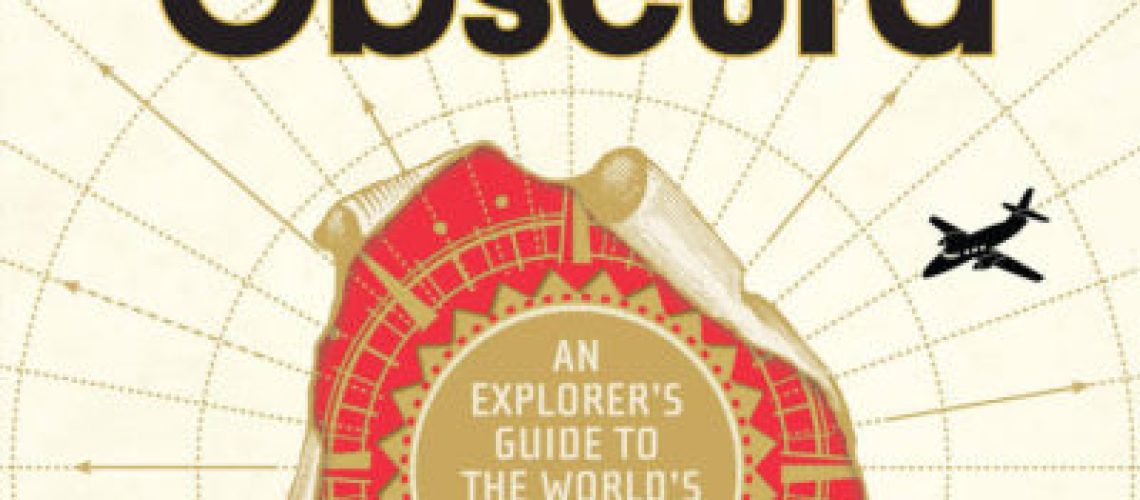The world is stranger, more magical, more strange than you can possibly imagine. Since 2009, the Atlas Obscura website has been a destination for people who want to look at, or add to, the ever growing database of strange and wondrous places and things in the world. From giant balls of string to glowworm caves, Atlas Obscura has been a blessing for people looking to escape the spreadsheets at work for a bit. And now there is a book. Atlas Obscura: An Explorer’s Guide to the World’s Hidden Wonders, written by Joshua Foer, Dylan Thuras and Ella Morton, takes 700 entries from the Atlas Obscura website and rewrites them into a handy hardcover book.
The book is arranged by region, drilling down to the state level in the case of the US. The variety of the 700 entries is a mixture of the small, the large, and the unexpected. Be it the agricultural museum of Cairo or the Kola Superdeep Borehole, or one square mile Carcross Desert, or the sign post forest at a spot on the Alaska Highway, there are sites from places you might never get to. And then there is the CIA Museum in Langley, and the Hobo Museum in Iowa, Carhenge in Nebraska, the old mechanical clock in Salisbury Cathedral, and other places and things you can really visit. Each entry provides directions on how to get to see it for yourself, cautioning the reader in cases where one has to dare going onto a closed locale, or even dare a trip to North Korea. It’s all implicit invitation for travelers to follow in their footsteps and see the wonders with their own eyes.

So is there a point to the book? Is there any good reason to read the book and not just go trolling and traversing through the website, which has many more entries? Yes. Even in an interconnected world such as ours, there is a tactile experience to flipping through this book, coffee table style, and discovering things like Pearl Fryar’s topiary garden in South Carolina, or the fact that there is a bust of Darth Vader on the Washington National Cathedral, or the near-continuous lightning storms that plague Congo Mirador in Venezuela. While wandering through links on the website is a time-honored tradition, the book has a presentation that the website can’t quite match. And the curated, relatively narrow 700 entries means that rather than a tsunami of things that can overwhelm you just wanting to read about a cool place or three on the web, you can get a curated selection.
There are also the entries that transcend the single place, that help extend and tie the book together; these are the real meat and potatoes of the book. They are all “inspired” by a particular single entry and give a sense that there is rhyme and repeat across the world. For example, the entry on Xieng Khuan Buddha Park in Laos is followed on the next two pages by an entry on Giant Buddha Statues of Asia, to scale, with the puny Statue of Liberty by comparison. Did YOU know that the Leshan Giant Buddha, 223 feet tall, is the tallest pre-modern statue on Earth? (It’s twice as high as the long lost “Wonder” The Colossus of Rhodes!). An entry on Maine’s cryptozoology museum is followed by a map of the US festooned with the reputed “Nessie”-like lake monsters across the country. (I had no idea that the Mississippi river in Minnesota has one, called “Pepie”).
I’ve joked about living in a science fictional world, but really, obscure and strange corners of the world can have a fantastic air. Even as our world is more interconnected than ever, there is a true sense of wonder to be had about our world that is just as real as a sense of wonder in wandering in a science fictional or fantasy landscape. The world is stranger, more magical, more strange than you can possibly imagine. Atlas Obscura: An Explorer’s Guide to the World’s Hidden Wonders brings that real-world sense of wonder to the reader. This is the kind of book that I think is hard to give to oneself, but is one of those books to gift to an armchair traveler. Or, even better, to a not-so-armchair traveler who might very well go and seek out some of the places contained therein.







